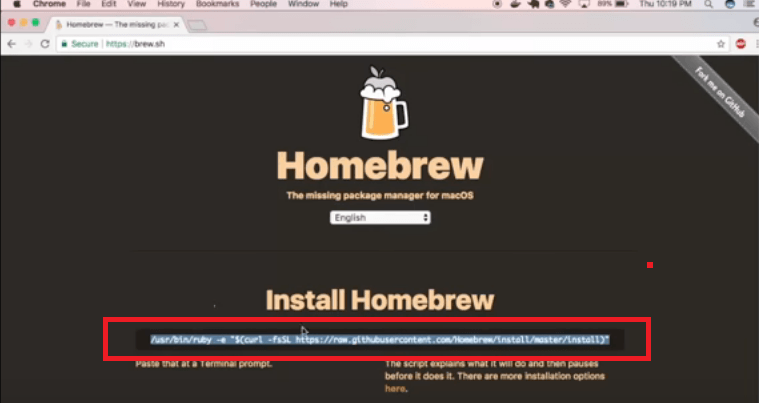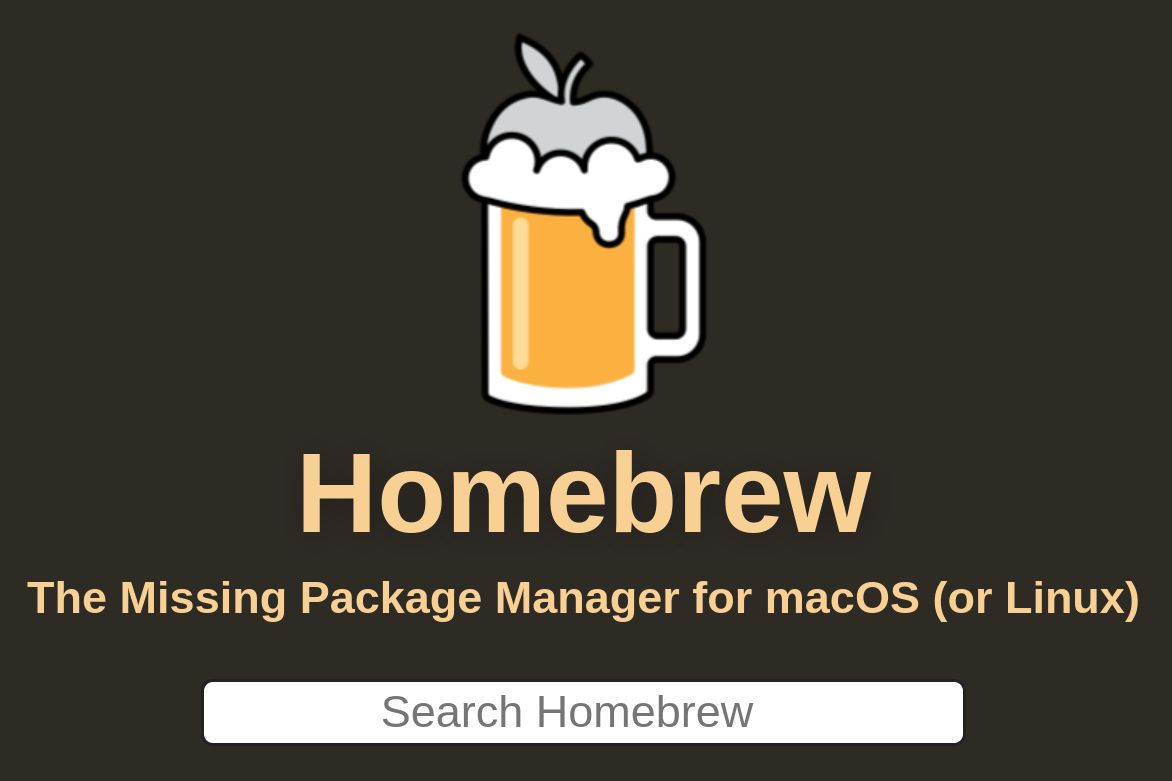

- #Upgrade homebrew mac how to
- #Upgrade homebrew mac install
- #Upgrade homebrew mac update
- #Upgrade homebrew mac upgrade
- #Upgrade homebrew mac software
To install or reinstall Xcode, execute the command below and then reboot your system to ensure the dependancies are covered before re-running Homebrew: While Xcode tools are typically installed by default when the macOS installer is run, Xcode may not be present on your Mac or may be an outdated version. In order for Homebrew to function properly, it depends on Xcode, Apple’s development environment, to be installed. Git clean -f No Command Line Tools present To remove outdated files no longer being tracked by Homebrew, run the following command:
#Upgrade homebrew mac upgrade
Luckily, this error is often tied to a previous version of the Homebrew upgrade command cached within the system’s folders. Homebrew has its own built-in upgrade mechanism that when executed causes the system to connect to the online repository to download only the necessary files to upgrade to the latest version of the package manager.īut what happens when the upgrade mechanism is displaying the error? This could pose a bigger problem as the solution to the problem is unavailable. To fix missing file errors, it is recommended to run the command below in order to upgrade Homebrew itself, updating the package manager’s support for newer operating systems:īrew upgrade Homebrew error when upgrading
#Upgrade homebrew mac update
With respect to Homebrew, it may affect the installed components, preventing them from running commands due to a file being modified during the update process. It is a good security practice to keep your OS up-to-date with patches, though these patches can and often do break something when trying to fix another issue. While the error message could reference anything from a Homebrew system file to a component used to run a particular application, the root cause is oftentimes the same: macOS has been upgraded. SEE: Ebook–Boost your Mac productivity with these 10 techniques (free PDF) (TechRepublic) Cannot find file(s)Īrguably, the most common error encountered by end users is a missing file or library. This guide will tackle three common problems that might affect your Homebrew installation and provide a way to correct each one.

#Upgrade homebrew mac software
Much like its Linux-based cousins, macOS is given complete control over software installations and configurations after the Homebrew system files are initially installed.ĭespite the added management capabilities, Homebrew is susceptible to random issues that may interfere with it working properly. Thank you for reading! I hope you now have the version of Python installed that's most useful to you.Homebrew, the third-party package manager for macOS, adds a great deal of flexibility for managing applications from the Terminal. Here are the commands for that: pyenv install You can update your version by installing a new version, making it your global default, and optionally uninstalling the old version. With more versions being released, you may want to update your version. With all that in place, you can now use Python 3. Configure your shell's environment for Pyenv If your python version remains the same, you have to make sure that you add the required init command as you can see in the documentation: Basic GitHub Checkout – 2.
#Upgrade homebrew mac how to
To set the newly installed version as the default, here's how to do it ( among many other ways): pyenv global 3.10.2 In my case, I have: Currently installed python versions on my systemįrom the screenshot above, the asterisk shows the currently active Python version, which is the default system version: python -version To see the list of the Python versions we have, we use the following command: pyenv versions Then we'll use this command: pyenv install 3.10.2 The version argument follows semantic versioning which is "".įor Python 3, let's say we want to install 3.10.2. You can install Python using pyenv with the following syntax: pyenv install With pyenv installed, you don't need to install Python with Homebrew anymore (as you may already be doing).

Make sure you follow the rest of the steps for installing pyenv in the documentation. Here's the command to install Python 3 on Mac: brew install pyenv Install pyenv using Homebrew with the following command: This tool helps you to work on different environments which require different versions of Python.

pyenv does the same thing for Python – it's a version management tool. If you're familiar with NodeJS, you'll know that nvm is used for managing versions of Node in different environments.


 0 kommentar(er)
0 kommentar(er)
